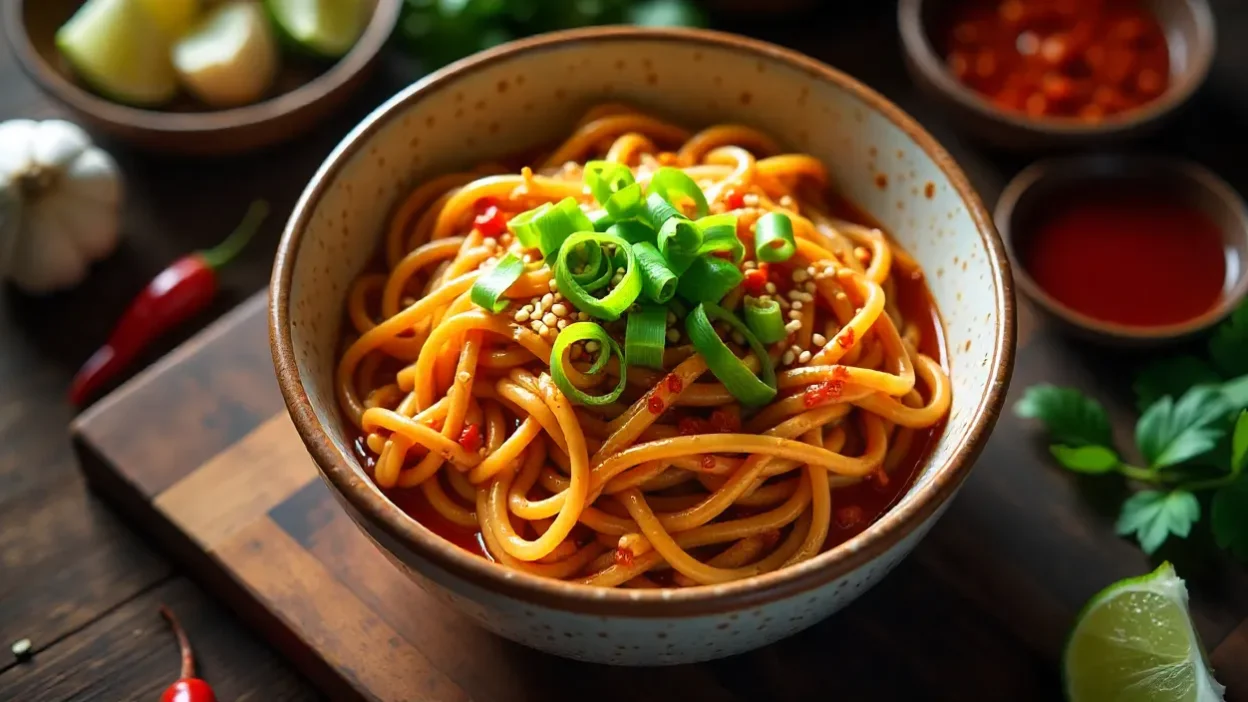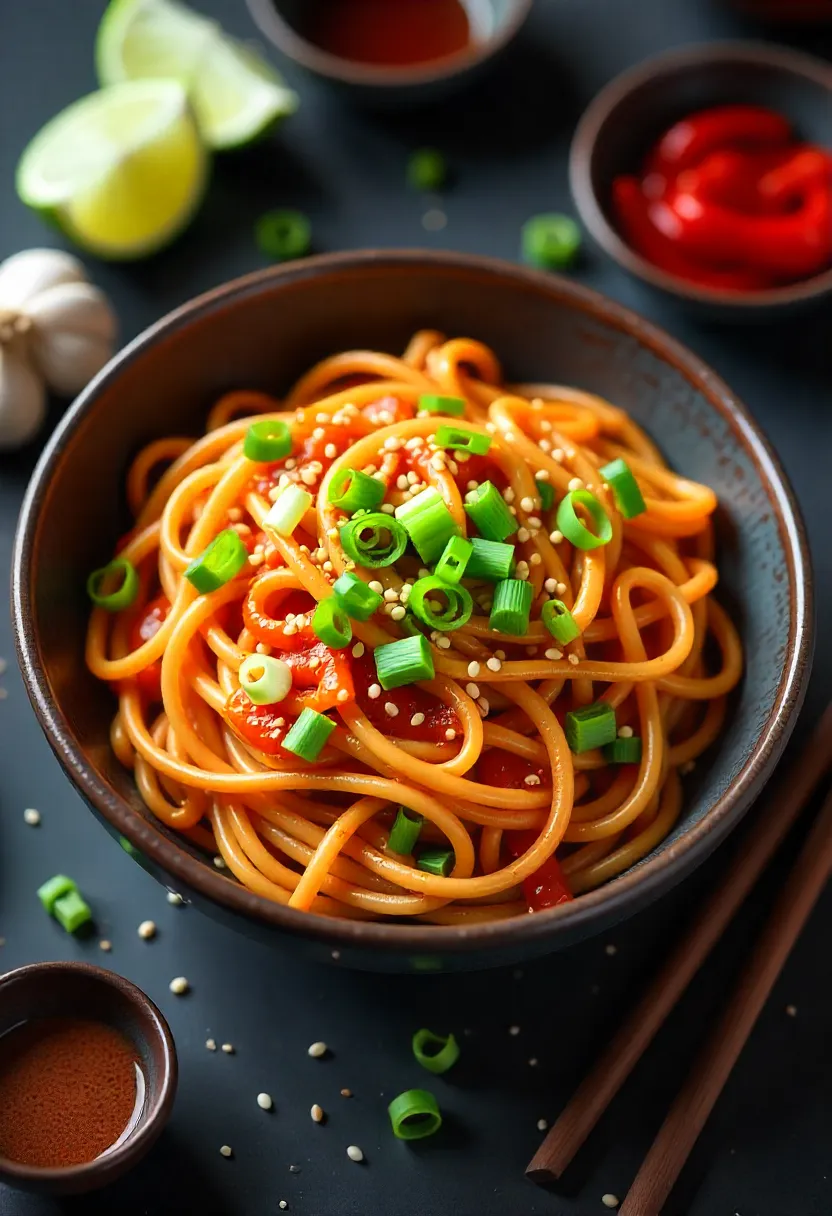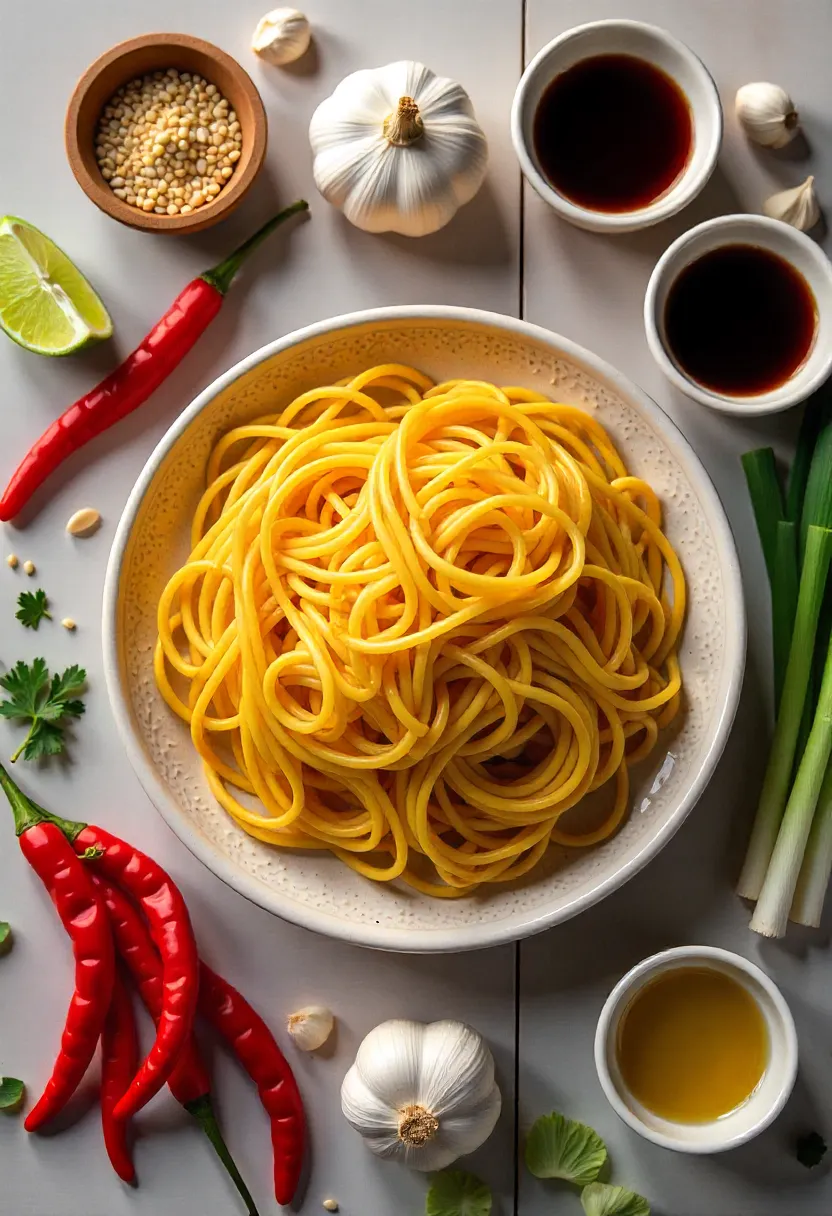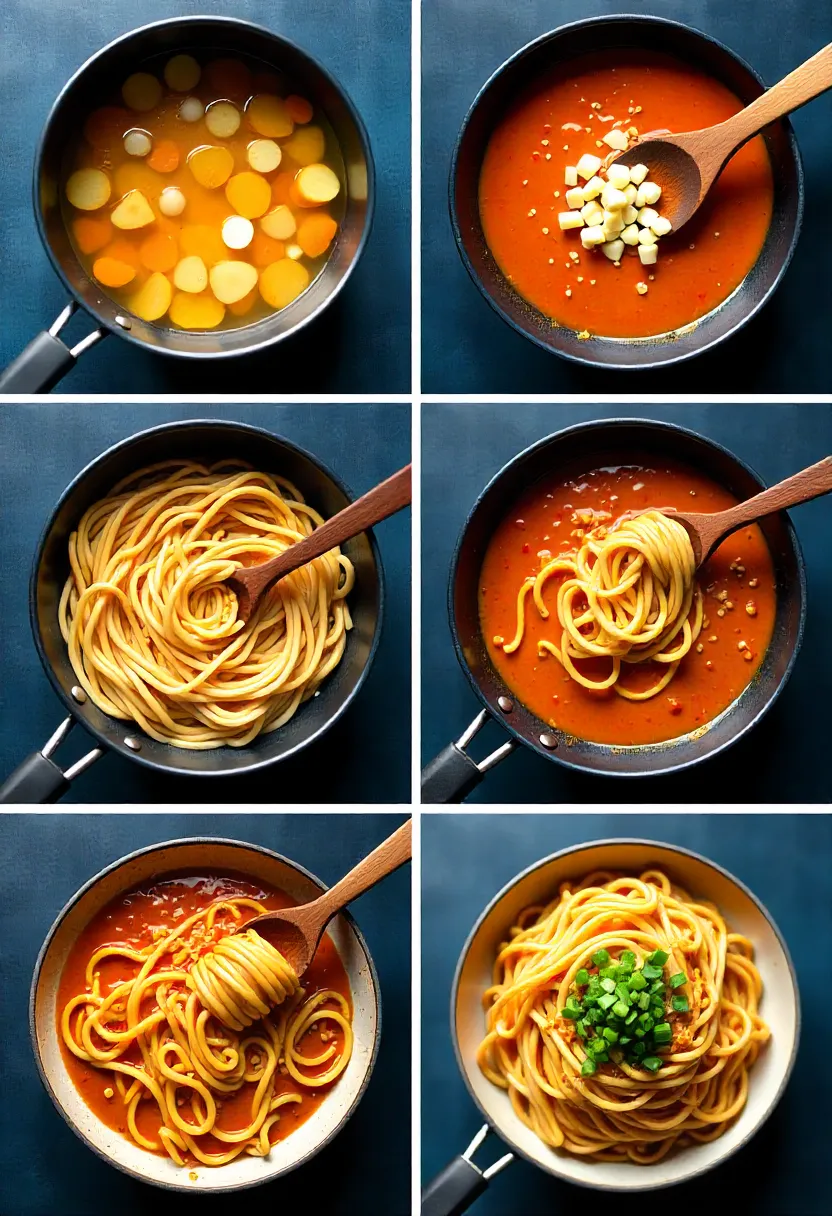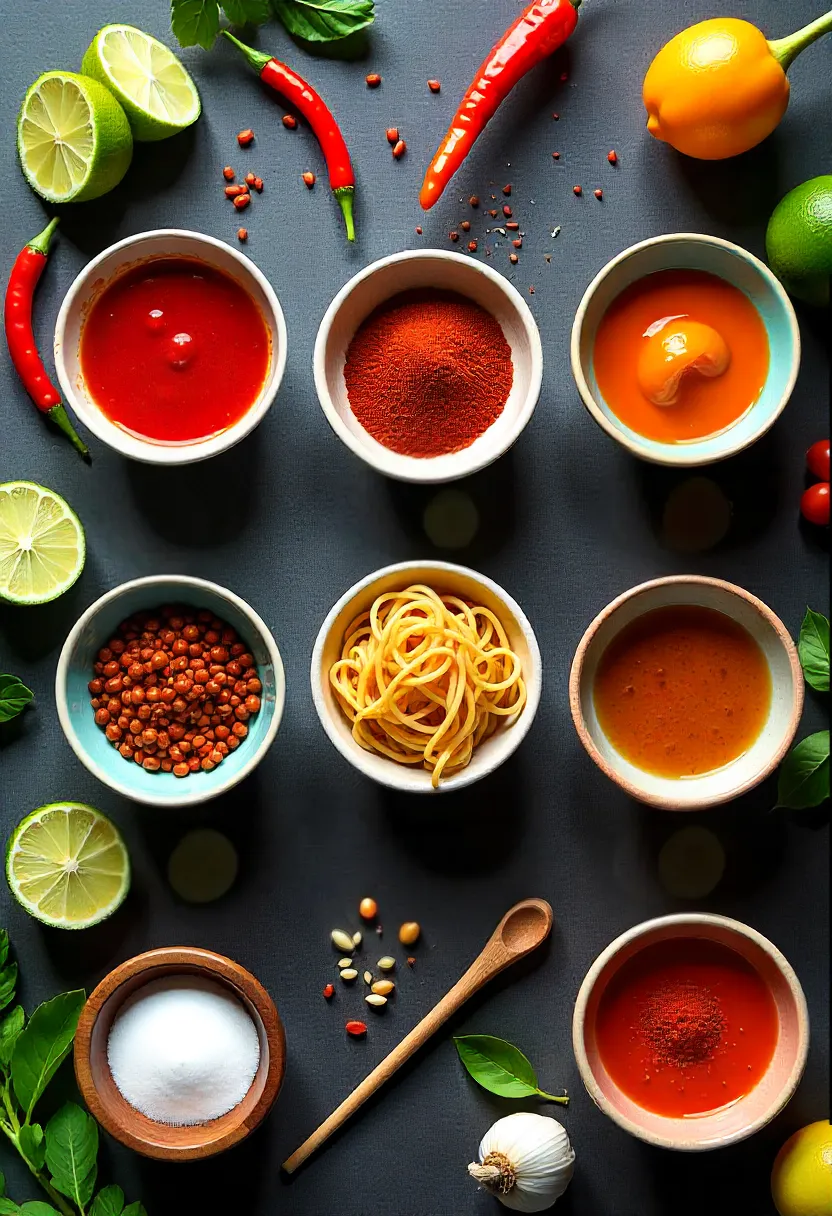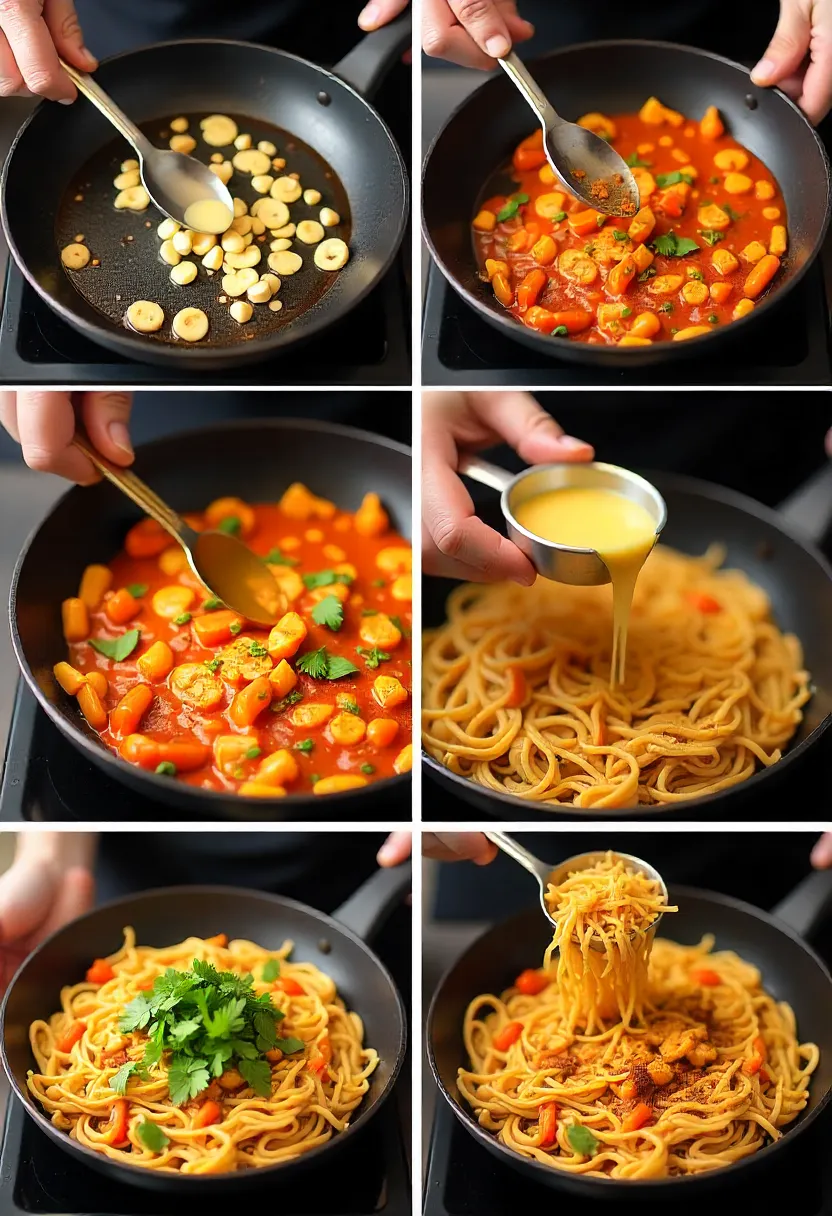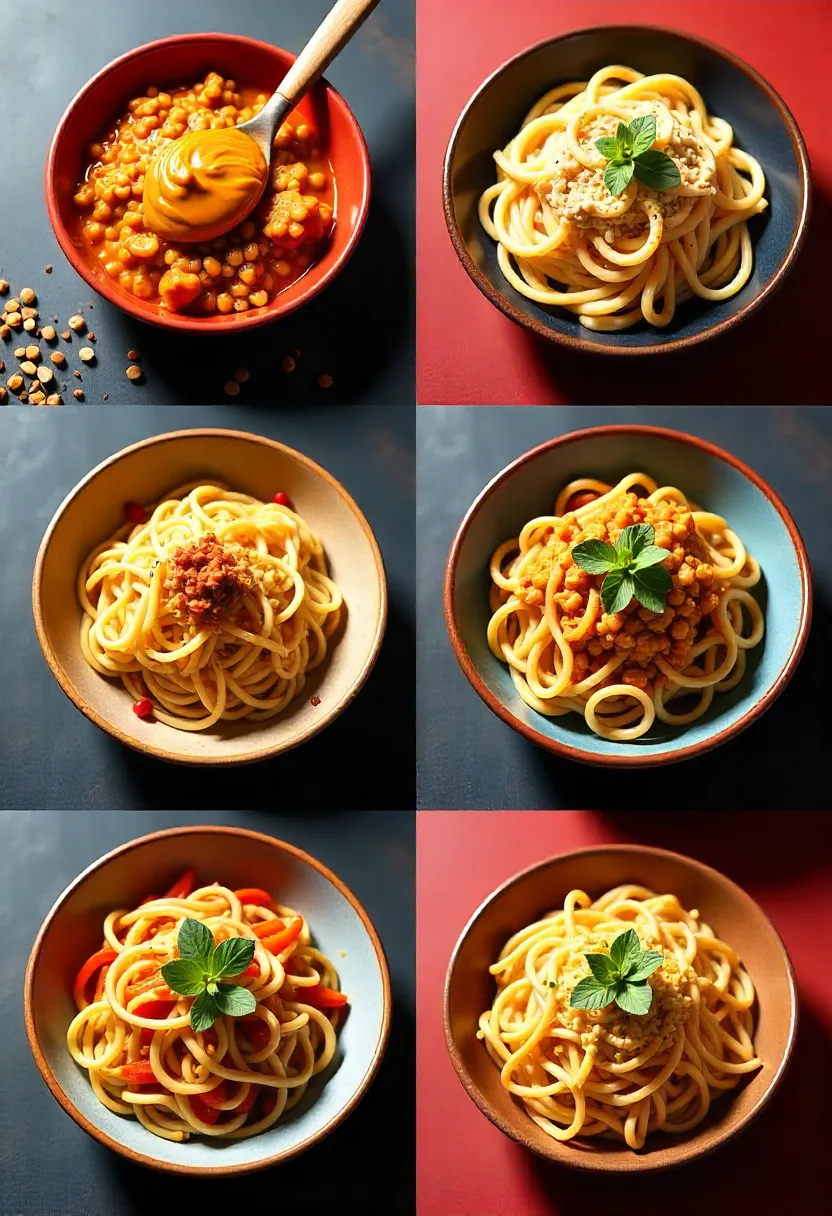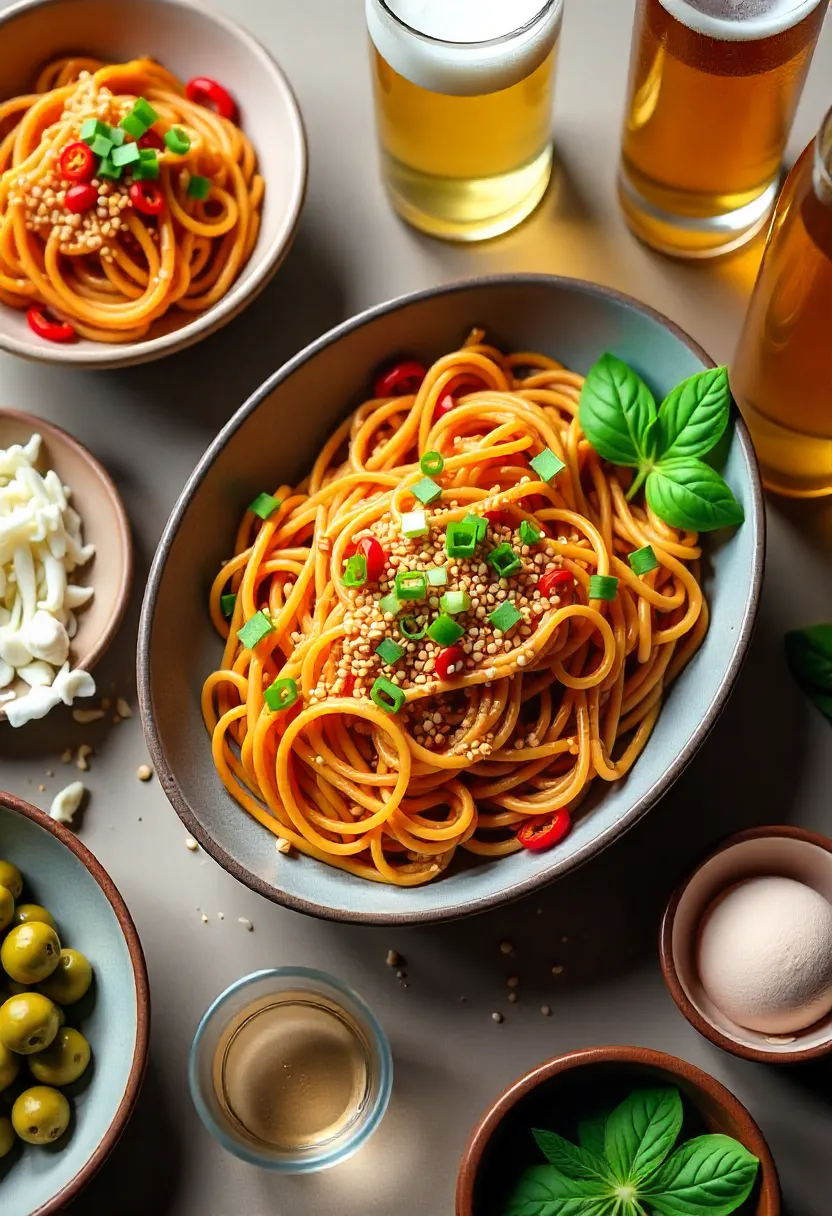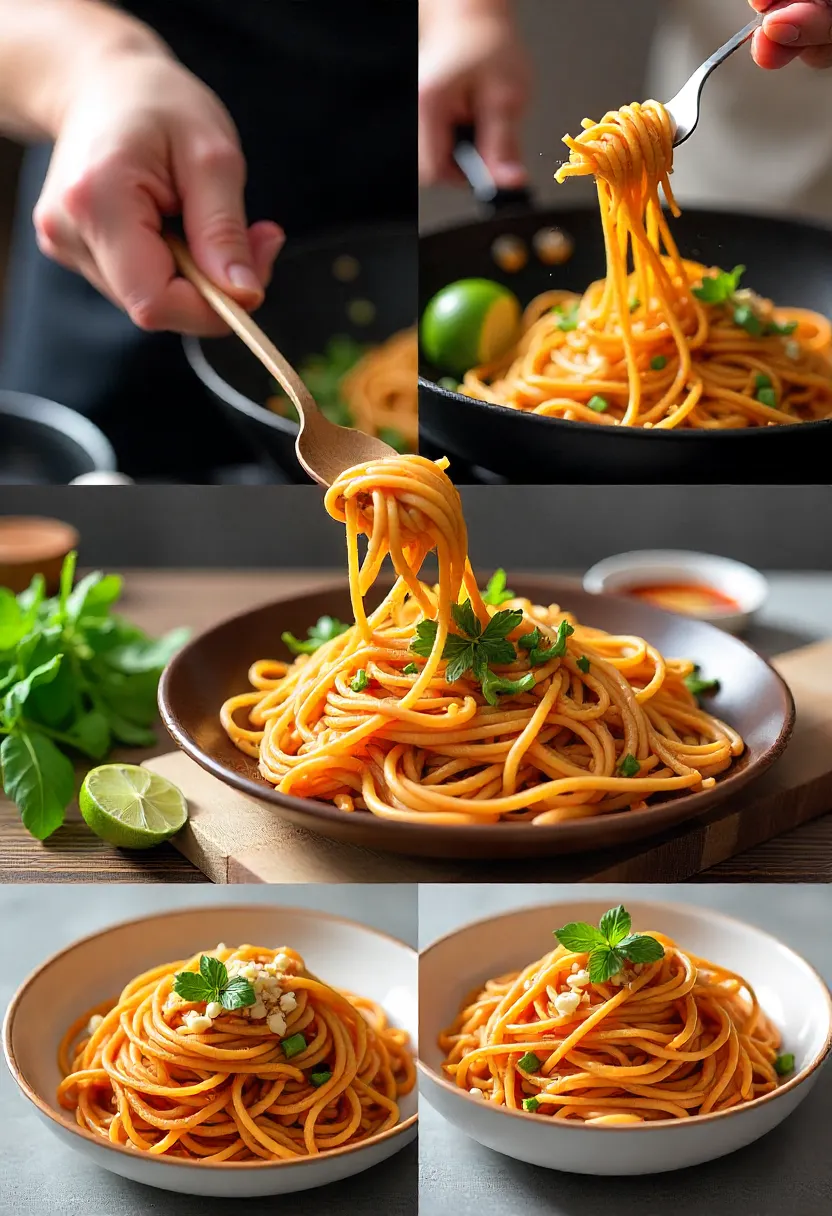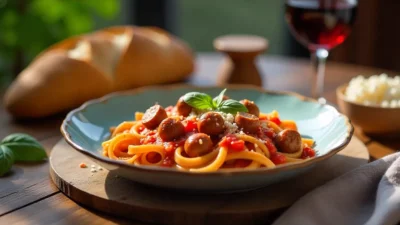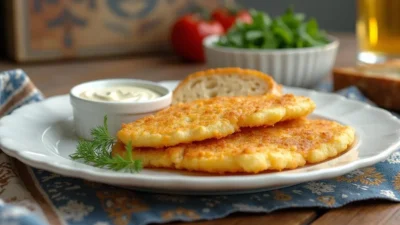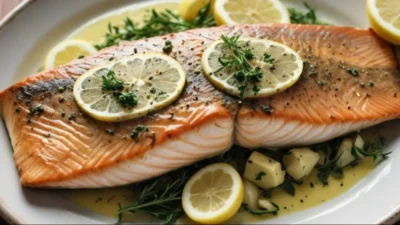Contents
If you’ve ever wanted a dish that hits every note on the flavor spectrum — spicy, savory, slightly sweet, and tangy — all while being deceptively simple to make, then let me introduce you to Fiery Chili Garlic Noodles. This is not just a noodle dish; it’s an experience. The sizzle of garlic in hot oil, the vibrant scent of chili wafting through the kitchen, and the rich, glossy sauce clinging to each strand of perfectly cooked noodle — it’s the kind of meal that leaves an impression long after the last bite.🍲
I first encountered this concept while experimenting with various Asian-inspired stir-fry sauces. I wanted something bold, something that demanded attention, yet remained achievable for a busy weekday night. Over time, I developed a version that balances heat, umami, acidity, and a whisper of sweetness in a way that feels both professional and approachable.
The Philosophy Behind the Dish
What sets these noodles apart from any standard stir-fry is the careful layering of flavors. Too often, people focus solely on heat when it comes to spicy dishes, but true mastery comes from balance. Garlic provides a pungent foundation, chili gives a fiery edge, soy sauce brings depth and umami, and a touch of rice vinegar or lime juice adds brightness that cuts through the richness. A hint of sugar or honey ties everything together, creating a rounded, multidimensional sauce that elevates humble noodles to an unforgettable meal. 🌶️🍜
For those of you who take your culinary craft seriously, understanding the interplay of flavors and textures is crucial. The noodles themselves are a canvas, and how you cook them, toss them, and coat them in sauce can make or break the dish. The magic comes in those small technical choices: al dente noodles for bite, precise sautéing of aromatics to avoid bitterness, and the timing of sauce incorporation to ensure every strand is perfectly coated.
🔥Ingredients — The Heart of the Dish
Before we dive into technique, let’s talk ingredients. For advanced cooks, each element is both functional and flavorful.
- Noodles: I prefer fresh egg noodles or lo mein style, but rice noodles, udon, or even spaghetti can work. The key is chewiness that holds the sauce. Overcooked noodles will turn mushy; undercooked ones will feel raw against the richness of the sauce.
- Garlic: Fresh, finely minced garlic is essential. It’s the backbone of the dish, giving depth, fragrance, and heat when properly sautéed.
- Chili: Use chili garlic sauce, sambal oelek, or a combination of fresh chopped chilies. Adjust according to your desired spice level — this is where personal taste and experience play a big role.
- Soy Sauce: Both light and dark soy contribute complexity — light for saltiness, dark for color and depth.
- Rice Vinegar or Lime Juice: A little acidity brightens the sauce and prevents it from feeling heavy.
- Sesame Oil: Adds a subtle nuttiness and aromatic dimension that transforms the dish.
- Sugar or Honey: Just a small amount balances heat and acidity, smoothing the overall flavor.
- Green Onions: Slice thinly; white parts go into cooking, green parts garnish for freshness and color.
- Sesame Seeds: Toasted sesame seeds add crunch and visual appeal.
- Optional Proteins & Vegetables: Shrimp, chicken, tofu, mushrooms, bok choy, or snow peas elevate this dish from a side to a full meal.
Each ingredient serves a purpose. The real artistry comes from understanding the role each element plays in achieving balance. This is what separates a competent cook from a skilled one.
✨Techniques — Step by Step
Preparing the Noodles
Bring a large pot of water to a rolling boil. Salt it generously — this seasons the noodles internally. Cook until just al dente. Timing is critical: overcooked noodles will soak up sauce and become limp, while undercooked noodles will lack cohesion. Drain immediately and rinse briefly under cold water to stop the cooking process. Set aside, lightly tossing with a few drops of oil to prevent sticking.
Building the Sauce
Heat a combination of vegetable oil and sesame oil over medium heat. Once shimmering, add minced garlic and shallots. Sauté until golden and aromatic — a few minutes is enough. Avoid high heat, which can burn garlic and introduce bitterness. If using fresh ginger, add it after the garlic has softened; its warm, pungent aroma elevates the sauce.
Next, add chili garlic sauce, soy sauce, rice vinegar, and a touch of sugar. Stir and let it simmer for 30–60 seconds — the aroma should fill your kitchen. This is the stage where you taste and adjust. Experienced cooks know that minor tweaks in this step — a splash more vinegar, a pinch more sugar, or a dash of chili oil — can dramatically enhance the final dish.
Incorporating Noodles
Add noodles to the pan and toss vigorously. Each strand should glisten with sauce but not be drowned. Use tongs for precision, lifting and folding the noodles to ensure even coating. At this stage, add optional proteins or vegetables, tossing just long enough to heat through without overcooking. Timing is everything.
Finishing Touches
Garnish with sliced green onions, toasted sesame seeds, and a drizzle of chili oil if desired. Presentation is crucial: even in casual home cooking, the visual appeal elevates perception of taste. Serve immediately while the noodles are hot, glossy, and aromatic.
Balancing Heat and Flavor 🔥🍲
Spice is a spectrum. Some cooks enjoy a slow-building warmth, others prefer an immediate punch. In this recipe, the heat is intentional but balanced. Too much chili overwhelms the dish; too little fails to deliver the signature kick. Here’s how I approach it:
- Mild Option: Reduce the chili garlic sauce, skip extra Sriracha, and rely on a small dash of chili oil for aroma.
- Moderate Heat: Use the full amount of chili garlic sauce plus a touch of fresh chopped chili.
- Fiery Heat: Double the chili garlic sauce, add crushed dried chilies or Szechuan peppercorns, and finish with chili oil.
Acidity, sweetness, and salt work in concert with heat. If a bite feels too sharp, a touch more sugar or honey smooths it. Too flat? A squeeze of lime or a splash of vinegar brightens the flavor profile.
Texture is equally important. The noodles should have a firm bite, the garlic slightly crisp around edges, the vegetables tender but still vibrant. This interplay of textures distinguishes professional-level stir-fries from average weeknight meals.
🍜Expert Tips for Advanced Cooks
- Garlic Precision: Watch the pan constantly. Golden, fragrant garlic is key; burnt garlic is ruinous.
- Oil Control: Enough to coat noodles and vegetables, but avoid excess that pools in the pan.
- Timing and Temperature: The sauce should be incorporated just before serving. Over-simmering leads to evaporation and overly concentrated flavors.
- Noodle Choice: Fresh noodles absorb sauce quickly and provide superior texture. Dry noodles require careful timing and occasionally a splash of water or stock to achieve the right consistency.
- Layering Proteins and Vegetables: Add proteins first if they need cooking, then vegetables in stages to maintain optimal texture.
🌶️Creative Variations
- Peanut Chili Garlic Noodles: Stir in a spoon of peanut butter or tahini for a nutty richness.
- Coconut Infusion: Use coconut milk instead of part of the oil to introduce a creamy, tropical note.
- Szechuan Tingling: Toast Szechuan peppercorns for the signature numbing sensation.
- Cold Noodle Salad: Let noodles cool, toss with a lighter sauce and fresh vegetables for a refreshing summer alternative.
- Butter-Enriched: Finish with a pat of butter for a velvety, indulgent texture.
These variations are not just tweaks; they are exercises in flavor architecture, allowing advanced cooks to experiment while respecting the core principles of balance.
🌶️✨Serving and Pairing
For presentation, pile the noodles high in shallow bowls, sprinkle with sesame seeds, and scatter chopped green onions. A drizzle of chili oil or a few fresh chili slices elevates both flavor and visual appeal.
Pair with complementary sides: steamed greens, light Asian-style slaw, or edamame for contrast. Drinks? A crisp lager, sparkling water with lime, or a lightly sweet Riesling counterbalances the spice. Dessert should be subtle: fresh fruit, sorbet, or coconut pudding refresh the palate without competing with the bold flavors.
👨🍳 The Professional Cook’s Perspective
For those with years of kitchen experience, this dish is more than a recipe — it’s an exercise in precision, timing, and flavor layering. Mastering the nuances of garlic sauté, sauce balance, and noodle texture trains the senses and reinforces foundational cooking techniques. Every adjustment — a pinch more chili, a splash of acid, a longer sauté — teaches the principle of balance and control.
What I find most rewarding is how customizable the dish is while remaining technically challenging. You can make minor adjustments to heat or sweetness, experiment with noodles or proteins, and still achieve a cohesive, flavorful result. That adaptability is the hallmark of a dish worthy of repeated experimentation in a professional kitchen.
Concluding Thoughts 🍜🔥
Fiery Chili Garlic Noodles embody the art of modern Asian-inspired cooking: bold, balanced, fast, and deeply satisfying. They reward precision, creativity, and respect for ingredients. Each bite is a lesson in harmony — spice, umami, acid, and texture working in perfect unison.
For advanced cooks, this recipe offers both a canvas and a challenge. It encourages experimentation, teaches control, and demonstrates the power of simple ingredients orchestrated with skill. From the first sizzle of garlic to the final toss of glossy noodles, this dish is a celebration of flavor, technique, and the joy of creating something unforgettable in your own kitchen.
🔥 Grab your wok, sharpen your knife, and embrace the heat — these noodles are not just a meal; they are an invitation to elevate your culinary craft.

